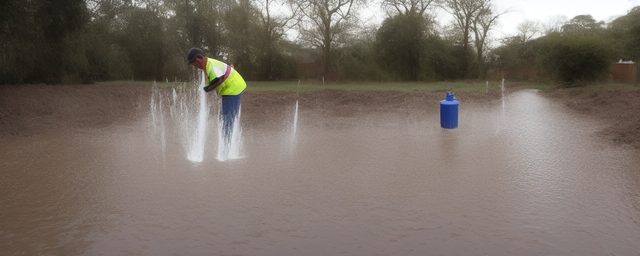
地下水位上升的危害
原|2024-04-26 05:00:46|浏览:31
The rising of groundwater levels can pose several hazards and challenges to both the environment and human activities. Some of the key impacts include:
1. **Flooding**: One of the most immediate and visible consequences of rising groundwater levels is an increased risk of flooding. As the water table rises, it can saturate the soil and overwhelm drainage systems, leading to water pooling on the surface and potentially causing widespread flooding in low-lying areas.
2. **Damage to infrastructure**: Higher groundwater levels can exert pressure on foundations, basements, and underground structures, leading to structural damage and instability. Buildings, roads, and other infrastructure may experience cracking, shifting, or even collapse as a result of prolonged exposure to elevated groundwater levels.
3. **Contamination of water sources**: Rising groundwater levels can mobilize contaminants present in the soil, such as heavy metals, pesticides, and industrial chemicals. This can lead to the contamination of drinking water sources, posing serious health risks to human populations and ecosystems that rely on clean water.
4. **Loss of agricultural productivity**: Excessive groundwater can saturate farmland, leading to waterlogging and reduced oxygen availability for plant roots. This can inhibit crop growth, decrease yields, and ultimately impact food production. In addition, waterlogged soils are more prone to erosion and nutrient leaching, further compromising agricultural sustainability.
5. **Ecological impacts**: Changes in groundwater levels can disrupt natural habitats and ecosystems that depend on specific hydrological conditions. Wetlands, rivers, and lakes may experience alterations in water flow patterns, affecting aquatic species and biodiversity. Groundwater-dependent ecosystems may suffer from habitat loss or degradation as a result of fluctuating water levels.
6. **Increased costs for water management**: Dealing with rising groundwater levels often requires costly interventions, such as installing drainage systems, pumping stations, or protective measures for infrastructure. These expenses can strain local budgets and resources, especially in areas where groundwater issues are recurrent or widespread.
Overall, the rising of groundwater levels presents a complex set of challenges that require careful monitoring, planning, and mitigation strategies to minimize negative impacts on communities, ecosystems, and economies.
猜你喜欢
- 茶的分类及代表品种
- 六大茶类的代表名茶分别有
- 茶的类型和代表
- 六大茶叶的分类及产地
- 庙的分类及代表
- 藻的分类及其代表
- 茶的分类及代表茶品特点
- 茶的分类及代表茶
- 简述茶类的分类及其代表性名茶
- 六大茶类的分类及代表茶
- 动物分类及代表
- 糖的分类及代表
- 茶的分类及代表茶叶
- 茶的分类及代表图
- 茶的分类及代表作
- 茶器按质地的分类及代表茶器
- 茶的分类及代表名茶教学设计
- 简述茶的分类及代表性名茶
- 请写出乌龙茶的分类及代表茶
- 法国雅文邑白兰地系列
- 雅文邑白兰地介绍
- 1952年法国雅文邑白兰地
- 法国雅玛邑白兰地
- 纽波利顿獒
- 法国犬品种
- 南非獒犬的优缺点
- 波尔多獒犬寿命
- 波兰狩猎犬
- 波尔多犬和罗威纳犬对比
- 波尔多犬和杜高对比
- 世界十大凶犬
- 护卫犬排行榜前十名
- 大红袍怎么泡效果好
- 大红袍怎么泡不开
- 大红袍怎么泡茶
- 大红袍怎么泡出来没颜色
- 大红袍怎么泡不苦
- 大红袍怎么泡多久
- 大红袍怎么泡才正确的特点
- 大红袍怎么泡没有柴味儿
- 大红袍怎么泡放多少合适
- 花香大红袍怎么泡
- 大红袍怎么泡茶好
- 大红袍是怎么泡的
- 大红袍怎么泡水好喝
- 大红袍用玻璃杯怎么泡
- 大红袍怎么泡味道浓一些
- 十大排名果花茶
- 十大花茶组合排名
- 十大花茶品种大全
- 十大花茶功效
- 十大花茶销量排行榜
- 十大花茶有哪些
- 十大花茶品种
- 十大花茶推荐
- 十大花卉排行榜
- 十大花卉
- 十大花茶调理内分泌
- 九五至尊秦昊明月关山
- 红茶冲泡工艺
为你推荐






































































